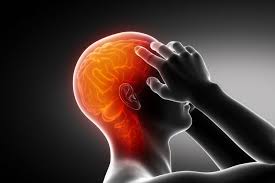
Migraines are more than just headaches; they are a complex neurological condition characterized by intense, throbbing pain usually on one side of the head. They can be accompanied by nausea, vomiting, and extreme sensitivity to light and sound. For many, migraines are a chronic issue that significantly impacts their daily life. Understanding the treatment options available is crucial for those seeking relief.
Understanding Migraines
Migraines are believed to be caused by changes in the brainstem and its interactions with the trigeminal nerve, a major pain pathway. Imbalances in brain chemicals, including serotonin, which helps regulate pain in your nervous system, are also involved. Migraines are often triggered by factors such as hormonal changes, certain foods and beverages, stress, and changes in wake-sleep pattern.
Treatment Goals
The treatment for migraines aims to prevent severe attacks, reduce the frequency and severity of migraines, and improve the quality of life. An effective migraine treatment plan is tailored to the individual, considering the frequency and severity of the headaches, the degree of disability they cause, and other medical conditions.
Medications for Migraine Relief
Migraine medications are categorized into two broad groups: pain-relieving medications and preventive medications.
• Pain-relieving medications: Also known as acute or abortive treatment, these medications are taken during migraine attacks and are designed to stop symptoms. Options include:
⦁
NSAIDs: Nonsteroidal anti-inflammatory drugs, such as ibuprofen or aspirin, can help relieve mild migraines.
⦁
Triptans: These medications, such as sumatriptan and rizatriptan, are often prescribed for migraine because they block pain pathways in the brain.
⦁
Ergots: Ergotamine and caffeine combination drugs are less effective than triptans but can be effective for those who have migraines lasting more than 48 hours.
⦁
Anti-nausea medications: Since migraines are often accompanied by nausea, medications like chlorpromazine, metoclopramide, or prochlorperazine can be helpful.
⦁
Opioid medications: These are reserved for those who cannot take other migraine medications.
• Preventive medications: These drugs are taken regularly, often daily, to reduce the severity or frequency of migraines. Choices include:
⦁
Cardiovascular drugs: Beta blockers and calcium channel blockers, which are used to treat high blood pressure and coronary artery disease, can reduce the frequency of migraines.
⦁
Antidepressants: Certain antidepressants are good at preventing some types of headaches, including migraines.
⦁
Anti-seizure drugs: Some epilepsy drugs, like valproate and topiramate, can decrease the frequency of migraines.
⦁
CGRP antagonists: A newer class of drugs, such as erenumab, fremanezumab, and galcanezumab, has been shown to be effective in preventing migraines.
Lifestyle Changes and Alternative Treatments
In addition to medications, lifestyle adjustments can help manage migraines. Regular sleep patterns, stress management techniques like meditation and yoga, and avoiding known triggers are beneficial. Some people find relief through alternative treatments, including acupuncture, massage therapy, and herbal remedies like butterbur, feverfew, and magnesium.
Interventional Treatments
For those with chronic migraines that do not respond to conventional treatments, interventional procedures may be considered. These include:
• Botox injections: OnabotulinumtoxinA (Botox) injections around the head and neck every 12 weeks can help prevent migraines in some adults.
• Nerve blocks: Injections of anesthetic to block nerve pathways can provide short-term relief for some individuals.
• Neuromodulation devices: Devices that deliver electrical or magnetic impulses to nerves may reduce or prevent migraine symptoms.
Developing a Treatment Plan
Developing an effective migraine treatment plan involves working closely with a healthcare provider. It may include keeping a headache diary to identify triggers and patterns, trying various medications to see what works best, and making lifestyle changes to avoid triggers.
Conclusion
Migraine treatment is a dynamic field with ongoing research leading to new and improved treatment options. While there is no cure for migraines, effective management is possible. With the right combination of medications, lifestyle changes, and possibly interventional treatments, individuals with migraines can find significant relief and regain control over their lives. It's important to consult with a healthcare provider to create a personalized treatment plan. Remember, each person's experience with migraines is unique, and what works for one individual may not work for another. Patience and persistence are key in finding the most effective approach to managing this challenging condition.




